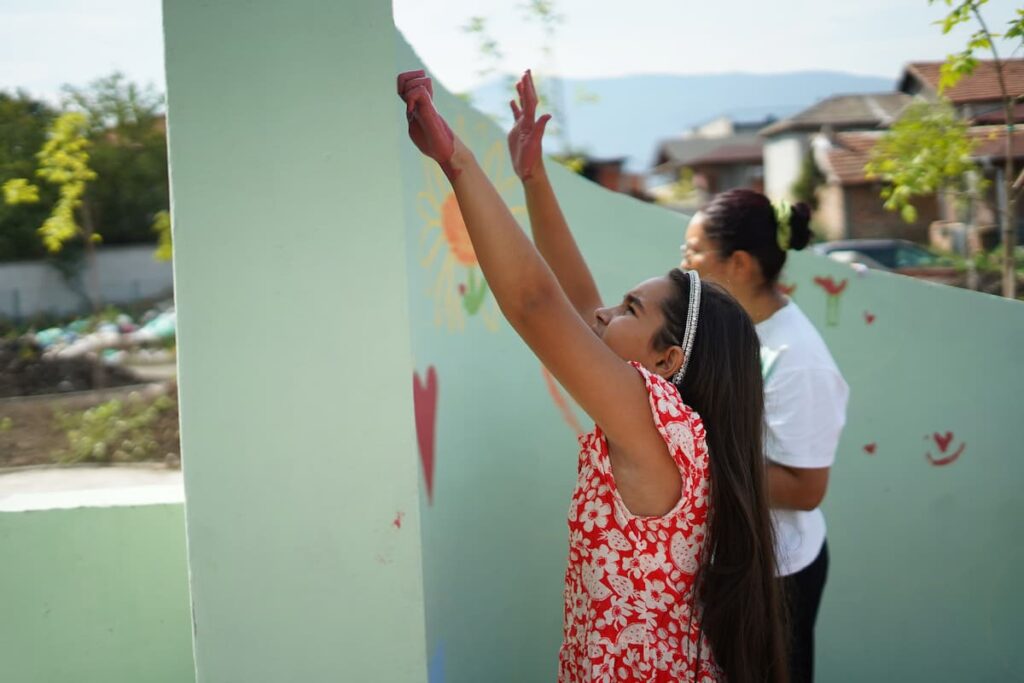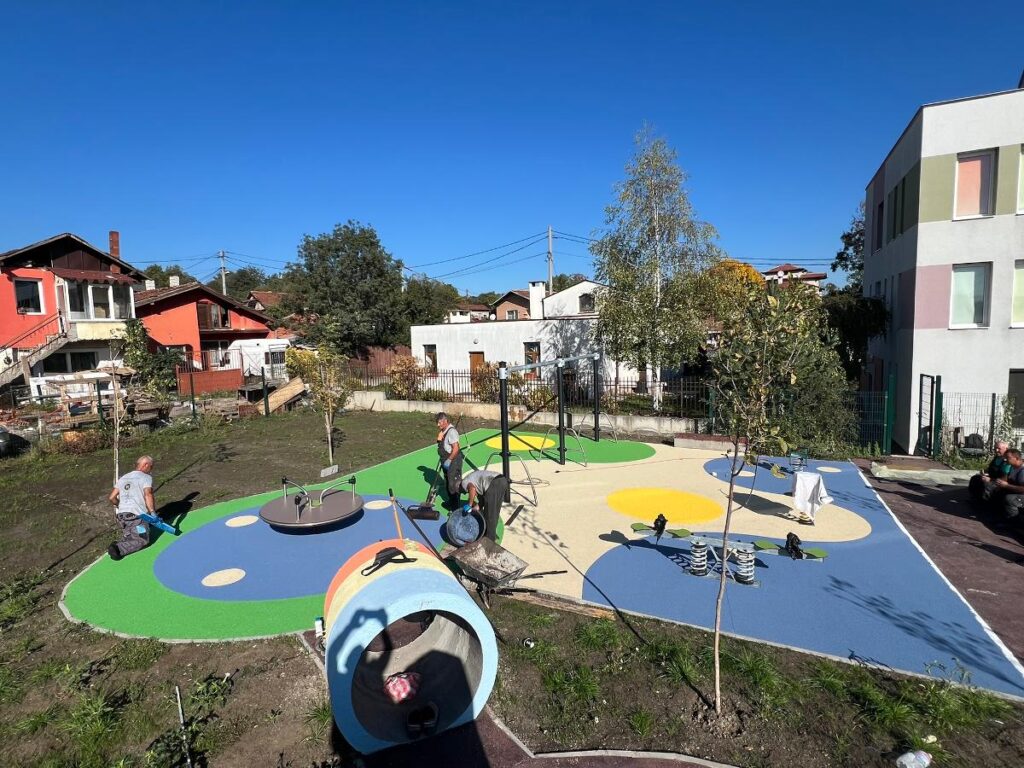Sofia, the capital of Bulgaria, is a tidy, green city, with wide boulevards and neoclassical architecture in the city centre and socialist apartment buildings in the outskirts. In autumn, the air pollution becomes bad because the city is enclosed by mountains, but overall Sofia is pleasant, walkable, and child friendly too. There are pedestrian streets, many green areas and playgrounds for kids to play — and also a beautiful experiential children’s museum called Muzeiko.
But you cross an invisible border as soon as you enter the neighborhood of Fakulteta. Home to one of the largest Roma communities in Europe, Fakulteta does not appear in its current shape on the municipal maps. Like favelas in Brazil or villas in Argentina, it is an informal settlement without basic services and a mix of sheet metal shelters and brick houses built by those who have for all intents and purposes taken over the land. There are open sewers in some parts of the neighbourhood. Otherwise, residents come up with their own makeshift solutions.
There is no government-run kindergarten, despite the population of the neighbourhood being 40,000-50,000, including an estimated 3,000 children between the ages of 0 and 14.
Early childhood education is clearly not a priority for a lot of governments worldwide. In Europe, many governments are struggling to meet the so-called Barcelona targets, which EU leaders agreed upon in 2002, saying that childcare should be provided for 33% of children under three and for 90% of children between three years old and the mandatory school age. (The targets were updated in 2022, but a lot of countries are still far behind.)
For Roma children, there is an even wider gap: 60% of Roma children under the age of three do not have access to Early Childhood Education and Care (ECEC) services nearby, according to the 2023 REYN Early Childhood Research Study.
What does it feel like to be excluded from a very early age? During the ISSA early childhood conference in Sofia in October, I got a chance to listen to several Roma rights activists on the issues their community is facing. And on how a nonprofit organisation and the community collaborated to do something the government wouldn’t do by itself — building a playground in an area where children have no space but the streets to play outside.
A community effort
As Boryana Dzhambazova, a colleague and friend and member of The First 1,000 Days community, explains in this piece, one foundation has been working very hard to create spaces for children and their caregivers.
The Health and Social Development Foundation (HESED), a local nonprofit that has been working with the Bulgarian Roma community for more than two decades, set up two centres in Fakulteta from where they run some of the neighbourhood’s few preschool programmes — as well as creating support during pregnancy and more.
And now they are about to open up Fakulteta’s first-ever playground.
It was a long and difficult process that resulted from a private donation. The Sofia Municipality then provided 65% of the funding, as part of a process whereby citizens of Sofia voted for their top project — the playground came fourth among thirty-eight proposals.
They had to clear rubbish from and drain a patch of abandoned land next to one of the centers they run in Fakulteta before they could start the construction last fall. There were of course challenges and setbacks: mud flowed over into the neighbouring houses and rats were released into the neighbourhood.
But the key was involving the community from the start, says Iskra Stoykova, who works for the Trust for Social Achievement (TSA), one of the key supporters of the project and of HESED’s overall work.
Stoykova, who supports the organisation’s approach toward maternal and infant wellbeing among Bulgaria’s most impoverished citizens, explained that parents and their children sat down to decide what to add to the playground and what colours it should be painted in.


Images courtesy of TSA
“No-go” neighbourhoods
The playground, which will be named “Charlene’s Garden” in the memory of the private donor Gary McDougal’s late wife), is limited in its scope. It will be open only during the centre’s working hours and will be protected by fences and security cameras to avoid vandalism. Previous, smaller experiments failed, says Stoykova, because only a part of the community was involved and felt connected to the idea.
What’s interesting is that when I told an audience in Sofia that I had had the privilege of visiting Fakulteta, there was an audible gasp. Look, I get it. One of the things I love most about my job is visiting places that regular citizens don’t get access to on a normal day — either because they are off-limits physically (think of a president’s office) or because they are off-limits in their imagination.
Roma are the largest ethnic minority in Europe, yet the struggles Roma children face receive very little attention. For most Sofia residents, going to Fakulteta makes no sense, in a similar way a regular Neapolitan would never go to the Scampia neighbourhood just to check it out, or a Buenos Aires resident wouldn’t go into Villa 31. As a journalist, I visited all these places, not for tourism but to ask questions and learn about the great work that some organisations do on the ground to change things and to fight stereotypes.
With love and care,
Irene
📣 The First 1,000 Days is edited by community member and friend, Shaun Lavelle. Special thanks to Boryana Dzhambazova for helping me fact-check this week’s edition.
Images courtesy of TSA
…
